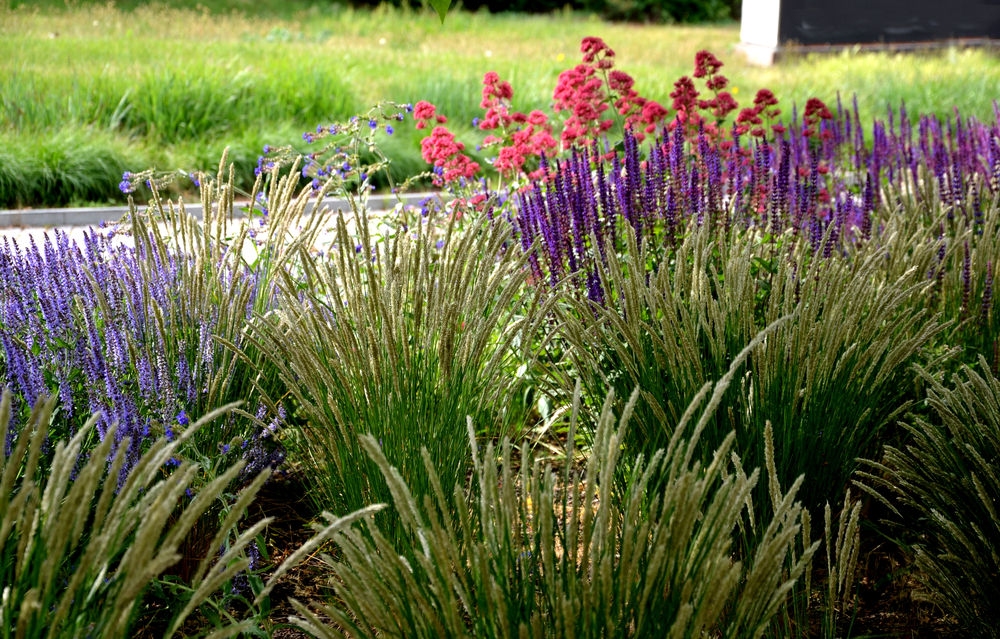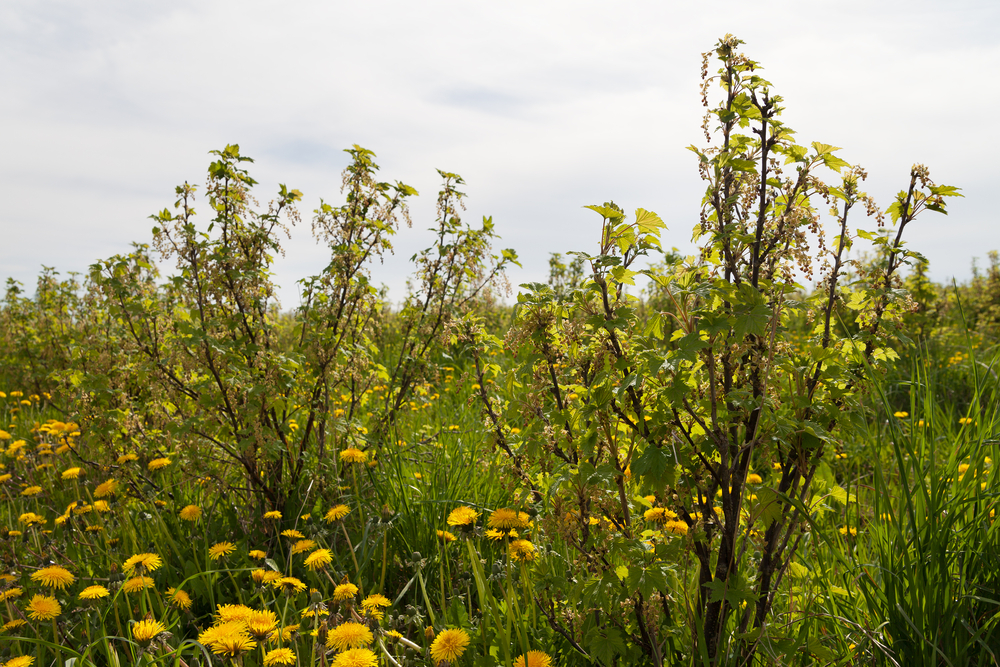Posts Tagged bushes
Get the Best Bushes for Your Low-maintenance Garden
If you’re a busy homeowner, chances are you don’t want to add gardening chores to your overflowing plate. But you can turn your yard into a beautiful landscape bursting with color and life.
Proper planning allows you to create a stunning low-maintenance garden with colorful and evergreen bushes. These are hardy, slow-growing shrubs that require minimum pruning, saving you the hassle of frequent pruning.
Dig in and learn more about the best shrubs for your low-maintenance garden.

How to Choose the Best Shrubs for Your Home
The key to creating a low-maintenance garden is filling it with shrubbery that never grows out of control or requires constant pruning. It allows for a rewarding gardening experience that doesn’t saddle you with recurring chores.
1. Sunlight
The amount of direct sunlight your yard receives affects the growth vigor. Ideally, plants require at least six hours of direct sunlight to thrive. However, you can still create a lush and colorful yard with beautiful blooms and fabulous foliage if your yard receives 3 to 6 hours of direct sunlight. Insufficient sunlight can lead to stunted growth and weak stems and give your bushes a drab appearance.
Observe your yard on a sunny day and note the light and shade pattern. Creating a detailed light map paints an accurate picture of how much light your yard receives to help you create the perfect garden.
2. Rooting System
Root size is a priority consideration if your garden is near your house. Shrubs with extensive roots can damage your home’s foundation, sidewalk, driveway, or septic system, saddling you with expensive repairs. Shallow roots shrubs such as hydrangea, forsythia, camellia, rhododendron, plantain lilies, and boxwoods are ideal for such gardens.
3. Sunlight Preferences
It may come as a surprise, but shrubs have varying sunlight requirements. Some shrubs thrive in full sun, while others prefer partial or deep shades. Understanding sunlight preferences is crucial to planning your landscape. You can match them with the ideal location to ensure growth and survival and create a blooming garden.
4. Size
Paying attention to the height and spread of your preferred shrubbery helps eliminates landscaping problems. Shrubs fall into three broad categories—small, medium, and large.
- Small shrubs are under 3 feet tall with a spread of 1 to 4 feet.
- Medium shrubs are under 6 feet tall and spread 3 to 6 feet.
- Large shrubs grow up to 20 feet tall with a spread of 6 to 15 feet.
The Best Low Maintenance Bushes for Your Yard
These shrubs will help you create a beautiful, low-effort garden without saddling you with routine gardening chores.
Dwarf Alberta Spruce
Dwarf Alberta Spruce is a compact, evergreen shrub with a distinct pyramidal shape. The leaves are bright, green aromatic needles and are densely packed, giving the dwarf tree a tight, fuzzy look. Dwarf Albert spruce rarely grows above 13 feet and has an astonishingly slow growth rate. It only grows 2 to 4 inches yearly, so it rarely requires pruning and will probably never outgrow its designated space. It thrives in well-drained acidic soils and direct sunlight.
Knock Out Rose
Knock Out Rose is a hard flowering shrub renowned for its beautiful continuous blooms during the growing season. It showcases vibrant flowers in red, pink, and yellow colors. Despite belonging to the rose family, Knock Out Rose is notoriously easy to grow. It’s resistant to pests and diseases and self-cleans—sheds its spent flowers without requiring deadheading. It can grow up to 7 feet tall, thrives in well-drained soils, and requires at least six hours of sunlight daily.
Blue Star Juniper
Blue Star Juniper is a compact slow-growing evergreen shrub with dense, silver-blue foliage. Mature shrubbery is about 3 feet tall with a spread of about 3 feet. They feature awl-shaped needle-like leaves arranged in clusters on tiny stems resembling stars. The unique shape of these slow-growing shrubs adds beauty and appeal to any landscape. Blue Star Juniper is exceptionally hardy, requires little maintenance, and thrives in various soil conditions.
Boxwood
Boxwoods are hardy, evergreen shrubs renowned for their dense foliage, compact growth habit, and landscaping versatility. The growth height depends on the specific variety and pruning style but typically ranges from 1 to 15 feet. Dwarf cultivars tend to stay compact, growing to a maximum height of about 2 feet. Boxwood bushes are slow growing, usually about 12 inches a year, and have spread ranges from 1 to 10 feet. They produce tiny white blooms in spring, thrive in well-drained soils, and grow best in partial or full sun.
Rhododendron
Rhododendrons are a diverse group of shrubs renowned for their showy, colorful flowers. Their growth height depends on the variety and cultivar. Compact and dwarf cultivars are 1 to 3 feet tall, while large rhododendrons are usually 6 to 15 feet tall. Compact shrubs may have a spread of 2 to 4 feet, while large ones can have a spread of 6 to 10 feet. Rhododendrons thrive in coarse, acidic soils and require partial sun exposure.
Create a Thriving Low Maintenance Garden
Shrubs are ideal an ideal choice if looking to create a beautiful, low-maintenance garden. Carefully choosing the shrub varieties can help pepper your landscape with a mix of evergreen and flowering shrubs. Working with an expert service can help you make the best choices and transform your drab yard into a beautiful paradise teeming with life.
Get the best low-maintenance bushes for your garden. Contact us today!
Tips To Keep Your Bushes Looking Their Best All Year
We can all agree that bushes are an essential part of any lawn. They make a great attraction and addition to places like walkways and fountains. You can also use them as the background of your lawn’s garden beds.
But for these small to medium-sized woody plants to keep looking their best all year, you need to take great care of them. The goal here is to ensure they add structure, texture and beauty to your landscape.
If you already have bushes or plan to plant them in your loan, there’s something here for you. We’ll cover the maintenance tips needed to keep the woody plants strong and healthy.

- Plant the Bushes at the Right Time
The lawn plants you choose to plant must be adaptable to your area’s climatic conditions and soil. Check the package for instructions and labels on the right growing conditions.
Fall is the best time to introduce new plants to your lawn. This allows the plant to get more time to adjust and grow before winter arrives. Also, during fall, the plant’s root system can easily establish before spring.
- Set a Watering Schedule
Your lawn plants will definitely need water to thrive and survive. You should therefore schedule watering at least once a week and do it thoroughly.
If watering the plants with a sprinkler, set the timer at least 10 minutes. Stop watering when the soil absorbs the water completely or when the lawn is soaked in water.
Water your new plants at planting time and intervals of 1 to 2 weeks daily after planting. You should also water them every 2 to 3 days once 3 to 12 weeks pass after planting. The plants will have more established roots after 12 weeks.
- Stick to Proper Feeding Habits
Instead of feeding your newly-planted bushes with fertilizers, mulch the soil with adequate compost. Mulching helps enrich the soil with essential micronutrients.
Later on, you can add fertilizers based on the nutrition requirements of the plants. For fragile plants, a layer of compost can help amplify the soil nutrients.
The most commonly used nutrients for the plants are potassium, phosphorus and nitrogen. Other essential nutrients include fairly large quantities of sulfur, magnesium and calcium.
- Prune at the Right Times
Pruning can only help maintain the shape and size of the plants if done regularly. You also need to employ different pruning tools for the task.
The best time for pruning the plants has to be spring. However, you have to figure out when the plant blooms. If its blooming season is spring, prune it when flowering stops.
And if it blooms in summer, consider trimming it in early spring or late winter before new growth forms. Either way, light summer pruning will work with a deciduous plant, while heavier pruning (in late winter) will be ideal for a dormant plant.
- Tie or Stalk the branches
Stalking the new bushes will work if they appear weak and it becomes difficult to straighten them. Give the plants some support until they develop a strong trunk. While doing this, ensure that the stalk has the same height as the plant.
You can also tie the stalk to the branches using heavy wrapped wire. But the cable needs to be shielded with a hose to protect the plant’s bark from grinding.
- Test the Soil
Soil testing will help you find out if the land has any deficiencies. If the test results suggest that there are deficiencies, address them using appropriate fertilizer. For instance, slow-release fertilizers will help you overcome nitrogen deficiency.
You can have your soil tested expertly if you send a sample to a soil lab in your area. Locally purchased soil test kits can also help you do this task.
- Watch out for Pests
Pests are undeniably a cause of concern in the maintenance of lawn plants. A lawn care professional can advise you on a suitable method to counter pest infestation on your lawn.
Examples of the most damaging lawn pests include Japanese beetles, masked chafers and white grubs. Others include caterpillars, mites and aphids.
- Mulching the Soil to Retain Moisture
Mulching is a great way to retain the warmth and moisture of the soil. The mulch can help your bushes take water from the soil during winter. It can be in the form of tree bark and wood chips if you lean more on the organic side and plastic paper for the inorganic options.
You can apply the mulches to the soil surface around your plants. This helps reduce soil erosion and control weeds. It also helps maximize the growth of your new bushes while cutting fertilizer costs.
The Takeaway
Implementing proper bush maintenance and gardening is the best way to keep your bushes and lawn looking healthy all year round. Good luck trying out these practices on your lawn.
And if you need professional lawn and landscaping help, we are always here to help you. Reach out today for a free estimate.





